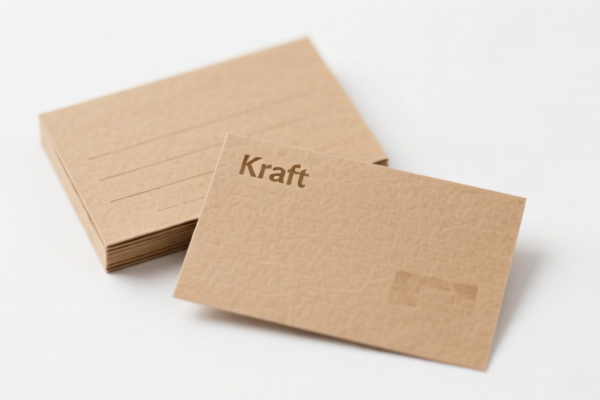| HS Code | Official Doc | Tariff Rate | Origin | Destination | Effective Date |
|---|---|---|---|---|---|
| 4823903100 | Doc | 55.0% | CN | US | 2025-05-12 |
| 4823901000 | Doc | 55.0% | CN | US | 2025-05-12 |
| 4820200000 | Doc | 55.0% | CN | US | 2025-05-12 |
| 4911100080 | Doc | 37.5% | CN | US | 2025-05-12 |
| 4911911500 | Doc | 37.5% | CN | US | 2025-05-12 |
| 4901990091 | Doc | 37.5% | CN | US | 2025-05-12 |
| 4901990092 | Doc | 37.5% | CN | US | 2025-05-12 |
| 9701990000 | Doc | 37.5% | CN | US | 2025-05-12 |
| 4906000000 | Doc | 37.5% | CN | US | 2025-05-12 |




Paper Flash Cards
Paper flash cards are a learning tool consisting of a set of cards with information on one or both sides, used for memorization and review. They are a simple yet versatile method employed across a wide range of subjects and learning levels.
Material:
- Typically constructed from card stock paper, offering durability and a suitable surface for writing or printing.
- Card weight varies, with heavier stock being more resistant to bending and wear.
- Can be commercially produced or handmade using blank index cards.
Purpose:
- Facilitate active recall, a highly effective learning technique.
- Aid in memorizing definitions, vocabulary, historical dates, formulas, concepts, and foreign language terms.
- Enable spaced repetition, a method of reviewing information at increasing intervals to enhance long-term retention.
- Support self-testing and identification of knowledge gaps.
Function:
- One side of the card typically presents a question, prompt, or term.
- The opposite side displays the answer, definition, or related information.
- Users attempt to recall the information on the hidden side when presented with the prompt.
- Cards are often sorted based on proficiency – those easily recalled are reviewed less frequently, while challenging cards receive more attention.
Usage Scenarios:
- Language Learning: Memorizing vocabulary, grammar rules, and verb conjugations.
- Academic Study: Preparing for exams in subjects like history, science, mathematics, and literature.
- Professional Training: Learning new terminology, procedures, or concepts.
- Early Childhood Education: Developing basic skills like letter and number recognition.
- Games & Quizzes: Can be used in interactive learning games.
Common Types:
- Basic Cards: Simple cards with a question/answer format.
- Multiple Choice Cards: Present a question with several answer options.
- Image Cards: Utilize images as prompts, particularly useful for visual learners or young children.
- Timeline Cards: Feature events in chronological order.
- Concept Mapping Cards: Illustrate relationships between different concepts.
- Pre-Made Decks: Commercially available decks focusing on specific subjects or standardized tests (e.g., SAT, GRE).
- DIY Cards: Handmade cards tailored to individual learning needs.
Paper flash cards fall under various classifications depending on their specific characteristics. Here's a breakdown of potential HS codes based on the provided information:
- 4823903100: This code covers “Cards, not punched, for punchcard machines, whether or not in strips.” While flashcards aren’t specifically for punchcard machines, this code applies to non-punched cards. The total tax rate is 55.0%, comprised of a 0.0% base tariff and a 25.0% additional tariff, increasing to 30.0% after April 2, 2025.
- 4823901000: This code covers “Of paper pulp”. If the flashcards are made entirely of paper pulp, this is a relevant classification. The total tax rate is 55.0%, with a 0.0% base tariff and a 25.0% additional tariff, rising to 30.0% after April 2, 2025.
- 4901990091: This code covers “Containing not more than 4 pages each (excluding covers)”. If the flashcards are considered printed matter and each card has 4 or fewer pages, this code may apply. The total tax rate is 37.5%, consisting of a 0.0% base tariff and a 7.5% additional tariff, increasing to 30.0% after April 2, 2025.
- 4901990092: This code covers “Containing 5 or more pages each, but not more than 48 pages each (excluding covers)”. If the flashcards are considered printed matter and each card has between 5 and 48 pages, this code may be applicable. The total tax rate is 37.5%, with a 0.0% base tariff and a 7.5% additional tariff, increasing to 30.0% after April 2, 2025.
- 4911100080: This code covers “Trade advertising material, commercial catalogs and the like Other”. If the flashcards are used for trade advertising or commercial purposes, this code could be relevant. The total tax rate is 37.5%, comprised of a 0.0% base tariff and a 7.5% additional tariff, increasing to 30.0% after April 2, 2025.
Important Considerations:
The classification depends on the material composition (paper pulp vs. other paper types) and whether the flashcards are considered printed matter. If the flashcards contain printed designs or text, codes under Chapter 49 may be more appropriate. If they are simple, unprinted cards, codes under Chapter 48 are more likely to apply.
Customer Reviews
No reviews yet.